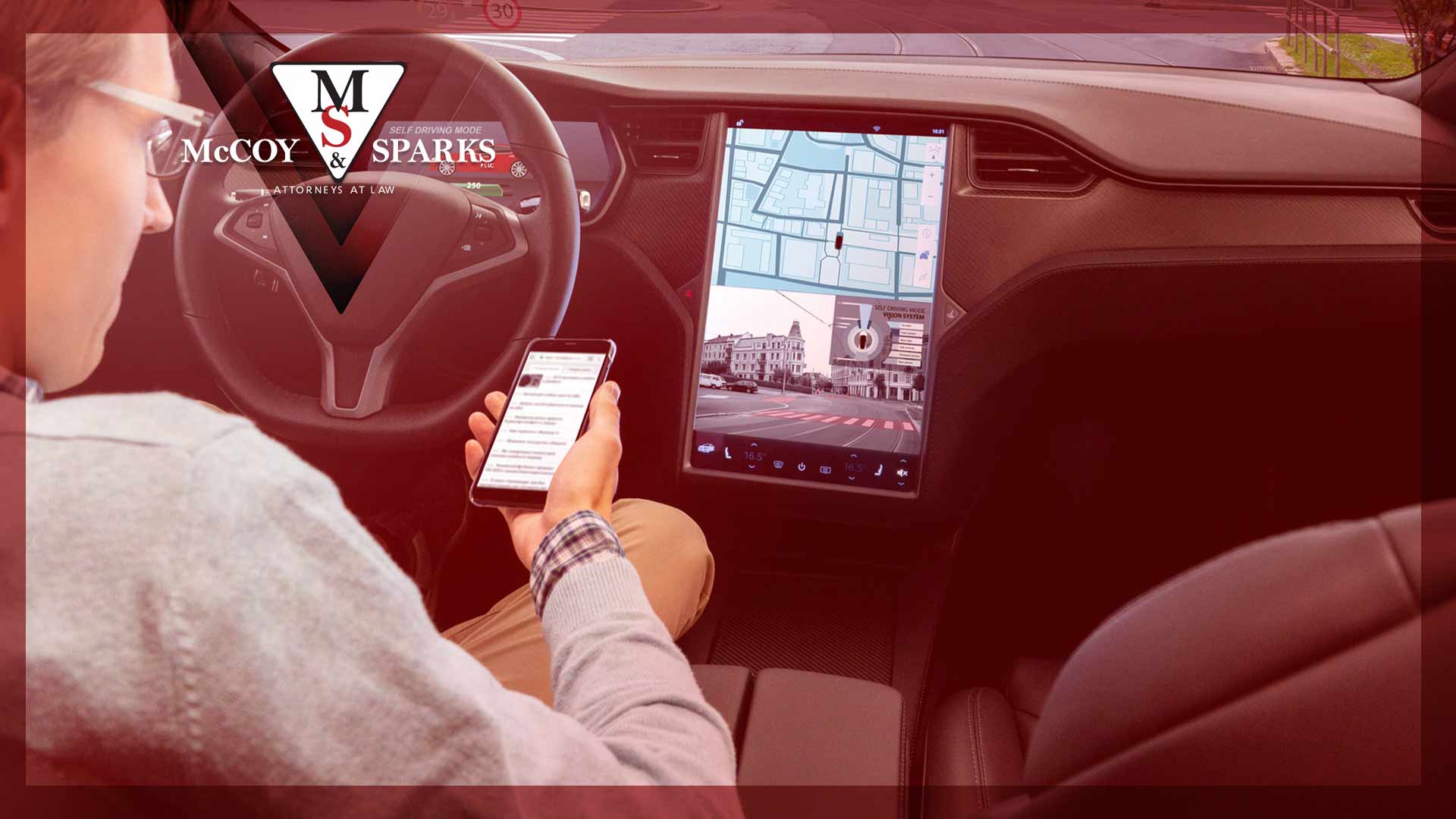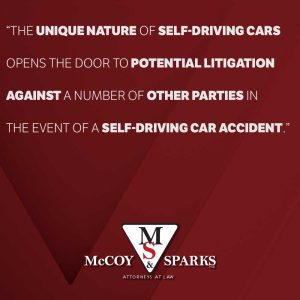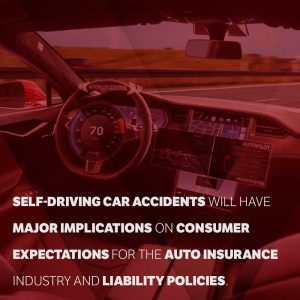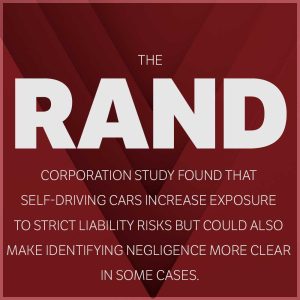
As self-driving cars become more common on our roads, one big question arises: Who is responsible when these autonomous vehicles get into accidents? Is it the self-driving car or the other driver of the other vehicle? Who should be held liable? With traditional cars driven by humans, it’s relatively straightforward to determine fault after a crash – the driver who made a mistake can be held liable through negligence laws. However, self-driving cars introduce new potential parties that could bear responsibility, such as a vehicle manufacturer, software developer, and even a government regulator.
In this comprehensive guide, we’ll explore the evolving legal landscape around self-driving vehicles and liability in self-driving car accidents. We’ll cover key topics like federal regulations for autonomous vehicles, product liability risks for manufacturers, the role of human drivers in semi-autonomous systems, liability in self-driving cars, and how the legal system is adapting to respond appropriately in order to address these emerging challenges with autonomous cars.
Why Hire McCoy & Sparks for Your Self-Driving Car Accident Case
If you or a loved one has been injured in an accident involving a self-driving vehicle, you need an experienced legal team on your side to ensure you receive full and fair compensation. McCoy & Sparks Law Firm in Kentucky is ideally positioned to take on these complex, cutting-edge cases involving self-driving vehicles.
With over 25 years of experience handling automobile accident and personal injury litigation, including cases involving autonomous cars, McCoy & Sparks has built a reputation as one of the premier plaintiff’s firms in the state. Their skilled attorneys have secured millions of dollars in verdicts and settlements for clients suffering from catastrophic injuries.
But what sets McCoy & Sparks apart when it comes to accidents involving self-driving vehicles is our forward-thinking approach and specialized knowledge of this emerging technology. As early adopters recognizing the legal challenges autonomous cars present, our firm has dedicated substantial resources to studying the regulatory landscape and potential liability issues.
The McCoy & Sparks team will utilize accident reconstructionists, including former crash investigators and engineers, who can analyze self-driving system data logs, vehicle telemetry, and other technical evidence. We will also consult with national experts in machine learning, artificial intelligence, automotive technology, and more to build cutting-edge legal strategies for cases regarding self-driving vehicles.
With self-driving accidents, proving liability can be extremely complex, often requiring in-depth forensic investigation to identify defects in vehicle hardware, software flaws, manufacturer negligence, regulatory lapses, and other potential causes. The technical firepower McCoy & Sparks can bring to bear gives our clients a substantial advantage.
But technical mastery is only one piece of the puzzle. Our attorneys at McCoy & Sparks are also legal strategists and trial lawyers with extensive courtroom experience with cases involving accidents with motor vehicles. Our track record of successfully trying high-stakes personal injury cases provides the firm with a competitive edge when litigation is required to maximize a client’s recovery in autonomous cars cases.
If you or someone you love was seriously injured due to the malfunction of a self-driving car’s automated systems, ensuring your claim is handled properly from the outset is critical. Don’t go it alone against big auto manufacturers and their legions of corporate lawyers. Rest assured that the responsible party will be held liable for your car accident. The legal team at McCoy & Sparks has the resources, experience, and tenacity to protect your rights and interests every step of the way. Call today for a free consultation and protect your personal liability.
Federal Regulations for Autonomous Vehicles
As autonomous vehicles hit the roads in increasing numbers, the federal government has started to establish safety regulations and guidelines for their development and deployment. Agencies like the National Highway Traffic Safety Administration (NHTSA) are responsible for ensuring fully autonomous vehicles meet robust safety standards before operating. Breaking these standards will lead to the developer being held liable if a car accident occurs with a self-driving car.
However, some legal experts argue that the federal government has been too lenient in regulating the self-driving car industry and driverless cars, allowing automakers and tech companies to rush autonomous vehicle technology to market before it’s truly road-ready. Inadequate federal oversight could open the door for a vehicle manufacturer to deploy unsafe self-driving systems, potentially leading to preventable accidents and injuries and manufacturer liability.
If an autonomous vehicle is involved in a crash due to a defect or substandard safety protocols that should have been caught by regulators, the injured parties may have grounds for the federal government to be held liable for negligence in failing to enforce proper safety regulations and testing requirements of the car.
Autonomous Vehicle Manufacturers and Product Liability
One of the primary concerns around liability in self-driving car accidents is the potential for manufacturing defects or design flaws in the autonomous vehicle technology itself. Vehicle manufacturers of these driverless cars have a legal duty to ensure the products they sell are safe for their intended use and free of unreasonable risks to consumers.
Under a product liability common law, if an autonomous vehicle crashes due to a hardware failure, software bug, or other defect introduced during the design or manufacturing process, the autonomous vehicle manufacturer could be held strictly liable for any resulting injuries or property damage – even if they took reasonable precautions.
For example, say a self-driving car failed to detect another vehicle and caused a collision because its sensor systems malfunctioned. If it’s determined a manufacturing defect in the sensors was to blame, the injured parties could file a product liability or manufacturer liability claim against the autonomous vehicle manufacturer to recover damages like medical costs, lost wages, and pain & suffering.
Importantly, while most personal injury cases require proving the defendant was negligent, strict product liability holds manufacturers responsible regardless of fault if a defective product causes foreseeable harm when used as intended. The injured party only needs to show the product was defective and that defect was the proximate cause of their injuries.
Vehicle manufacturers could try to limit their full liability exposure through compliance with all relevant safety standards and extensive pre-market testing. However, the cutting-edge nature of self-driving car technology and the lack of comprehensive regulations mean many risks are likely unforeseeable at this stage. Some legal scholars anticipate an increase in product liability lawsuits as fully autonomous vehicles become more common on roads.
Other Parties Potentially Liable in Autonomous Vehicle Accidents
While manufacturing defects represent a key liability risk, the unique nature of self-driving cars opens the door to potential litigation against a number of other parties in the event of a self-driving car accident:
Software Developers
The advanced artificial intelligence and machine learning algorithms powering self-driving car sensor systems and navigation are developed by specialized software companies, not traditional automakers. If a crash is caused by a flaw or error in this software environment, injured parties could file suit against the software developer for damages.
Component Manufacturers
Like traditional vehicles, self-driving cars incorporate parts and components from a range of third-party suppliers like tire makers and sensor manufacturers. If a defective component contributed to an autonomous driving system failure and subsequent collision, the component maker could be a defendant in an injury lawsuit.
Repair Shops and Technicians
Improper repair work or maintenance on an autonomous vehicle’s hardware or software systems could compromise safety and driving capabilities. Shops or individual technicians may be liable if negligent repairs are deemed the cause of a self-driving car accident.
Government Road Planners
Mapping data is a critical input for self-driving navigation AI. If an autonomous vehicle crashes due to outdated or incorrect mapping data from government road planning agencies, the injured parties may be able to seek damages from that public entity.
Human Drivers and Semi-Autonomous Systems

While the self-driving cars of the future may be capable of true full autonomy with no human intervention required, today’s vehicles classified as “self-driving” generally still require an attentive human driver ready to take over operations in certain conditions. These are semi-autonomous systems with both automated and human-controlled modes.
To determine liability after a car accident with one of these semi-autonomous vehicles, much hinges on whether the automated driving system or human driver was in control at the time of the crash. If the self-driving mode was active, liability could fall to the automaker for any defects or failures. But if the human driver had control (or should have taken control before the collision), they could be assigned fault and liability like a typical non-autonomous car accident.
Some self-driving car accidents may even involve apportioned liability between the human driver and the vehicle automation. If the automated system failed to adequately alert the driver to take control, and the driver also acted negligently by not paying sufficient attention, both parties could be assigned a percentage of fault under comparative negligence rules.
This blurred line between automated and human operation in modern self-driving cars underscores the need for clearer regulations and legal precedents dictating responsibility in semi-autonomous accidents. Until full autonomy is achieved, human operator behavior will remain a key liability factor when a crash occurs.
Proving Liability Against Self-Driving Car Operators
Even in cases where autonomous vehicle technology is deemed at fault for a crash, the legal onus is not automatically on the manufacturer or developer to compensate victims. Like any personal injury lawsuit, the injured party and their attorneys must still construct a persuasive case demonstrating liability and negligence by a preponderance of the evidence.
For lawsuits against self-driving car manufacturers, this could involve extensive technical forensic analysis and expert witness testimony to prove a defect existed and directly caused the car accident.
Specific evidence may include:
- Vehicle sensor data and diagnostic logs from the self-driving car accident
- Inspection and testing of the self-driving hardware and software
- Internal engineering documents related to design and quality assurance
- Depositions from employees involved in development and manufacturing
In semi-autonomous situations where human driving is a factor, legal teams will need to establish driver negligence just as they would in a regular car accident case. This could mean obtaining video footage of the incident, eyewitness accounts, police reports, cell phone records, and other proof that the driver acted unreasonably by failing to monitor the self-driving system or respond appropriately to taking control.
Given the complexity of autonomous vehicle technology, self-driving car accident litigation will require highly specialized legal experience. Hiring a personal injury firm with specific experience in this emerging field, as well as access to self-driving car consultants and car accident reconstruction specialists, will be crucial for injured parties to recover just compensation.
The Insurance Liability Implications

In addition to the product liability risks facing autonomous vehicle manufacturers and suppliers, self-driving car accidents will inevitably have major implications on consumer expectations for the auto insurance industry and liability policies.
Currently, personal auto insurance covers driver negligence as the main culprit behind collisions. But if self-driving software is determined as the cause of a car accident, would the driver’s policy still cover the resulting damages? Most likely not.
Similarly, if a person is riding in a fully driverless self-driving car with no steering wheel or pedals, their personal auto policy may be invalid since no “driver” exists. In this scenario, the autonomous car maker or software operator would likely need to insure and take liability for the operation of the driverless vehicle.
Moving forward, auto insurance liability may shift largely away from most drivers and towards autonomous car companies and manufacturers in a universal product liability-based model. Insurers will need new policy frameworks and risk models tailored specifically to the reality of self-driving cars and mobility services operated by commercial fleets.
Some have proposed a single insurance liability system where manufacturers extend coverage to any collisions involving their self-driving vehicles, simplifying claims. But such an arrangement could also expose the highly consolidated auto insurance market to catastrophic losses from complex mass litigation against a single manufacturer.
Ultimately, expect insurance liability and self-driving accidents to be a hotly-debated legal challenge in coming years as the technology mainstreams.
Potential Injuries Resulting from Self-Driving Car Accidents
While self-driving cars are touted as being safer than human drivers, accidents can still occur due to system malfunctions, defects, or other causes. When these crashes happen, the injuries sustained can be just as serious and debilitating as any other automobile collision.
Some potential injuries include:
Whiplash
This neck injury is caused by the sudden jerking motion that occurs during a rear-end collision. The rapid back-and-forth whipping of the head and neck can strain the muscles and ligaments, resulting in pain, stiffness, and reduced mobility.
Concussion/Traumatic Brain Injury
The violent forces involved in a car accident can cause the brain to strike the inside of the skull, leading to a concussion or more severe traumatic brain injury (TBI). Symptoms can include headaches, dizziness, cognitive impairment, and behavioral changes.
Spinal Cord Injuries
Damage to the spinal cord, either from trauma or compression, can result in partial or complete paralysis affecting mobility and sensation in the arms, legs, and trunk depending on the location and severity of the injury.
Internal Bleeding/Organ Damage
The blunt force impact of a crash can cause internal injuries like ruptured spleens, punctured lungs, or damage to other vital organs resulting in internal bleeding that requires emergency medical treatment.
Bone Fractures
The forces involved in collisions commonly cause broken bones, especially in the arms, legs, ribs, and pelvis area. Compound fractures where the bone protrudes through the skin are particularly severe.
Lacerations
Loose objects in the self-driving vehicle like shattered glass and plastic can cause deep cuts and lacerations during the impact of the crash, potentially resulting in disfigurement or disabling injuries if nerves or tendons are severed.
Psychological Trauma
Even when physical injuries are not present, the trauma of being in a violent car accident can result in psychological issues like post-traumatic stress disorder (PTSD), depression, and anxiety.
Whether the accident is caused by a self-driving system failure or other circumstances, these injuries can have lasting consequences requiring extensive medical treatment and personal care during recovery. Seeking compensation through a personal injury claim becomes crucial for covering costs.
A Google Self-Driving Car and the Autonomous Vehicle Industry
One of the pioneers and leaders in the development of self-driving car technology is Google, through its self-driving car project started in 2009 (now under its Waymo subsidiary). The Google self-driving car has logged millions of miles on public roads using advanced driver assistance systems capable of fully automated operation with no human intervention required.
As the technology of self-driving and driverless cars advances from tech giants like Google as well as traditional automakers, it raises complex questions around liability and personal responsibility in crashes involving these automated vehicles. Even if the self-driving software is fully in control, can the “driver” be held personally liable if something goes wrong? What if an at-fault driver of the other vehicle causes the collision with the driverless car?
Fully Automated Vehicles and Personal Liability
In truly driverless cars with no human driver’s seat or manual controls, liability will likely fall primarily on the manufacturer in case of an accident as there is no place for human error. Strict product liability laws could make self-driving car companies responsible for any crashes caused by defects or failures in their self-driving technology, similar to other product liability cases.
However, determining liability won’t always be straightforward. What if a driverless vehicle failed to take evasive action to avoid a collision due to the limits of its artificial intelligence? The legal system will have to weigh whether the self-driving technology performed reasonably under the circumstances.
In semi-autonomous vehicles with advanced driver assistance features like cruise control or automatic braking, liability could be shared between the human driver and manufacturer depending on which party was in control at the time of the crash. Extensive forensics and data analysis may be required to prove whether negligence occurred from human error or a technological failure with the cruise control or other features in order to determine liability.
Legal Complications and Emerging Frameworks

A RAND Corporation study examined some of the legal complications autonomous vehicles present, such as establishing liability when self-driving software is making decisions currently guided by human judgment. The RAND Corporation study found that self-driving cars increase exposure to strict liability risks but could also make identifying negligence more clear in some cases.
As driverless technology evolves, legal professionals anticipate a wave of lawsuits that will shape new strict liability frameworks and precedents through the courts. Government regulators will also need to craft updated laws and regulations to address the foreseeable risks posed by automated vehicles to protect public safety, determine liability, and prove negligence.
When crashes do occur involving driverless vehicles, injury victims and their legal teams must be prepared to navigate this complex, specialized arena to ensure the responsible party is held liable. They’ll need to determine all potential sources of liability, whether it’s the self-driving car’s software, manufacturing defects, another vehicle’s driver negligence, or other factors.
Having an experienced personal injury firm that understands both the legal nuances and technical aspects of self-driving car accidents will be crucial to proving fault and obtaining appropriate remedies and just compensation for property damage, injuries, and losses.
The Broader Societal Impacts of Self-Driving Liability
Beyond just determining fault after self-driving car crashes, the question of liability and the ability to prove negligence for this emerging transportation technology will profoundly impact society in a number of key areas:
Public Trust and Adoption
For autonomous car technology to achieve mainstream public adoption, consumers must trust that there are clear liability rules and safety accountability measures in place. If self-driving cars are perceived as being in a legal “wild west” with murky liability after accidents, public confidence will dwindle.
Additionally, insurance premiums for self-driving cars could skyrocket, inhibiting widespread adoption. Clear liability insurance standards will also encourage manufacturers to prioritize safety and invest in rigorous testing and development. Without them, corners may be cut, leading to more accidents and injuries.
Legal Precedents and Regulatory Frameworks
Self-driving car liability cases will shape future legal precedents and regulatory frameworks governing autonomous car technology. Courts will establish liability standards, while legislators and regulators will craft laws and regulations to address emerging risks and protect public safety.
Economic Implications
Liability concerns will influence investment decisions in the industry of self-driving vehicles and the broader transportation sector. Manufacturers may face increased costs for liability insurance or legal settlements, impacting profitability and innovation. Meanwhile, industries reliant on traditional auto insurance, such as personal injury law firms and insurance companies, may experience significant disruption.
Get Guidance from McCoy & Sparks After a Car Accident
As self-driving cars continue to evolve and become more prevalent on our roads, questions of liability in accidents involving autonomous vehicles will become increasingly complex and significant. At McCoy & Sparks law firm in Kentucky, we recognize the importance of staying at the forefront of legal developments in emerging technologies like self-driving cars. Our experienced team of car accident attorneys is committed to advocating for victims of self-driving car accidents, ensuring the negligent parties are held liable, and securing just compensation for our clients.
If you or a loved one has been injured in a self-driving car accident caused by negligence, don’t navigate the legal process alone. Contact McCoy & Sparks today at 844-459-9467 for a free consultation to discuss your case and explore your legal options as the other driver. Our dedicated attorneys will work tirelessly to protect your rights and help you obtain the compensation you deserve for your car accident injuries.

